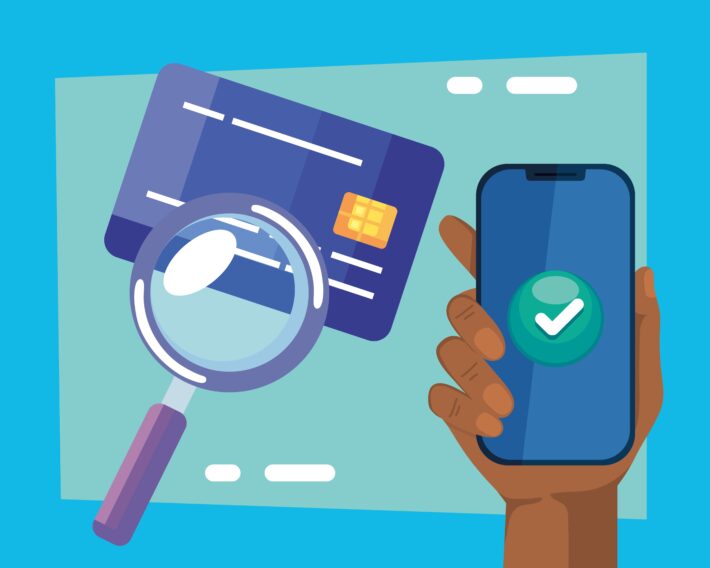Identity Verification Securing Iot Internet Of Things Devices

In an increasingly interconnected world, the security of Internet of Things (IoT) devices is of paramount importance. Identity verification plays a crucial role in safeguarding these devices from unauthorized access, cyber threats, and potential physical damage. This article examines the significance of identity verification for IoT, the risks associated with its neglect, and various methods to ensure secure access. Additionally, best practices for implementation and future developments that promise to enhance security in this rapidly evolving landscape will be discussed.
We will explore essential strategies for protecting IoT devices and ensuring their integrity in a digital environment characterized by constant change.
What Is Identity Verification?
Identity verification is the process of confirming an individual’s identity through various methods, ensuring that the person accessing a system or service is genuinely who they claim to be.
In the current digital landscape, characterized by frequent data breaches and incidents of identity theft, the implementation of robust identity verification mechanisms is essential for protecting sensitive information and preserving user privacy.
This is especially pertinent in situations involving online transactions, account access, and secure communication, where dependable authentication processes can significantly reduce the risks associated with unauthorized access.
Why Is Identity Verification Important for IoT Devices?
Identity verification is critical for Internet of Things (IoT) devices, as it is fundamental in ensuring device security, safeguarding user privacy, and maintaining the integrity of the extensive IoT ecosystems that interconnect billions of smart devices.
As the Internet of Things continues to grow, the risk of unauthorized access and data breaches escalates, thereby necessitating the implementation of robust authentication methods. Effective identity verification serves as a defense against potential threats, enhances data protection strategies, and establishes essential trust management protocols, which are imperative for both individual users and organizations employing IoT technologies.
What Are the Risks of Not Having Identity Verification for IoT Devices?
The lack of identity verification for IoT devices presents substantial risks that may jeopardize both security and user privacy. In the absence of proper authentication measures, these devices become susceptible to unauthorized access, which can result in identity theft and data breaches that impact not only individual users but also organizations that depend on IoT technologies.
The failure to implement robust security protocols heightens exposure to a range of threats, underscoring the necessity of comprehending these risks to formulate effective strategies for securing IoT ecosystems.
1. Unauthorized Access to Sensitive Data
Unauthorized access to sensitive data presents a significant concern when identity verification measures are inadequate, as it can result in substantial security breaches and identity theft. When IoT devices lack proper authentication mechanisms, malicious actors may exploit vulnerabilities, thereby gaining access to personal information, financial data, and other critical resources.
This situation not only jeopardizes individual user privacy but also threatens the reputation and operational integrity of organizations that depend on secure device management.
The repercussions of such breaches extend beyond immediate financial losses, often resulting in long-term damage to customer trust and brand loyalty. For organizations, a failure to implement robust identity verification mechanisms can lead to regulatory penalties and legal liabilities, as they may be held accountable for lapses in data protection.
Unauthorized access can also facilitate further attacks, compromising interconnected systems and worsening the overall threat landscape.
As cyber threats continue to evolve, the significance of stringent identity verification cannot be overstated; it is essential for safeguarding both user data and the foundational elements of organizational security, thereby ensuring a reliable environment for all stakeholders.
2. Malware and Cyber Attacks
The absence of effective identity verification can render IoT devices susceptible to malware and cyberattacks, which may have detrimental effects on both individual users and organizations. When authentication protocols are either weak or nonexistent, malicious software can easily infiltrate devices, enabling attackers to exploit security vulnerabilities for various purposes, including data theft, unauthorized device control, or launching additional attacks on interconnected systems.
In the absence of robust identity verification processes, attackers can readily gain unauthorized access to sensitive information, resulting in significant financial losses and violations of personal privacy. The interconnected nature of IoT ecosystems implies that a single compromised device can act as a starting point for more extensive network attacks, thereby increasing the risk for both businesses and individuals.
Common attack vectors include phishing schemes, where users are deceived into revealing their credentials, and the exploitation of outdated software that remains unpatched due to insufficient monitoring of device identities. The cumulative impact of these vulnerabilities can be catastrophic, leading not only to financial consequences but also to reputational damage and a loss of trust in digital technologies.
3. Physical Damage to Devices
Physical damage to Internet of Things (IoT) devices can arise as a direct consequence of unauthorized access, emphasizing the necessity for effective identity verification protocols. When attackers infiltrate systems without proper authentication, they have the potential to manipulate device settings, disable security features, or even inflict physical damage, thereby compromising the integrity and functionality of the devices. This situation highlights the critical importance of implementing robust security measures to safeguard both the devices themselves and the data they manage.
Along with the immediate physical effects, such breaches can result in long-term operational disruptions and financial losses. The risk of unauthorized individuals accessing sensitive information stored within IoT devices further exacerbates the dangers associated with insufficient identity verification. This vulnerability extends beyond the individual device and can lead to broader weaknesses within the network.
Consequently, the adoption of comprehensive identity management strategies is essential. Such measures not only mitigate the risks of physical damage but also ensure the integrity of data transmission and provide protection against the cascading effects that unauthorized access may trigger throughout interconnected systems.
What Are the Different Methods of Identity Verification for IoT Devices?
Various methods of identity verification for IoT devices exist, each utilizing distinct authentication techniques to ensure secure access and safeguard user information. These methods encompass traditional approaches such as passwords and PINs, as well as more advanced technologies like biometric verification and multi-factor authentication, which offer layered security to enhance device protection.
As the IoT landscape continues to evolve, the implementation of effective authentication methods becomes increasingly critical in addressing the rising security challenges.
1. Passwords and PINs
Passwords and Personal Identification Numbers (PINs) are conventional methods of user authentication that constitute the first line of defense in identity verification for Internet of Things (IoT) devices. While these methods are widely employed, their effectiveness is heavily dependent on user practices, including the creation of strong, unique passwords and the regular updating of these credentials to mitigate security risks. Despite their simplicity, the implementation of security best practices surrounding passwords and PINs is essential for preventing unauthorized access and ensuring the integrity of devices.
To enhance the effectiveness of these authentication methods, users should prioritize complexity by incorporating a mixture of letters, numbers, and special characters. Additionally, avoiding easily guessed information, such as birthdays or commonly used phrases, further fortifies security measures. The adoption of a password manager can streamline this process by securely storing and generating unique passwords for various accounts. Regularly updating login credentials—at least every few months—is also crucial for safeguarding personal information.
Furthermore, emphasizing the importance of two-factor authentication (2FA) as an additional layer of security can significantly reduce the risk of breaches, making it imperative for users to understand and adopt these practices.
2. Biometric Verification
Biometric verification is a sophisticated method of user authentication that employs unique biological characteristics—such as fingerprints, facial recognition, or iris scans—to confirm an individual’s identity. This approach provides a superior level of security compared to traditional passwords and PINs, as biometric data is inherently difficult to replicate or forge. Given the increasing concerns regarding privacy, it is imperative to ensure that biometric data is securely stored and transmitted to maintain user trust and comply with privacy regulations.
In the context of the Internet of Things (IoT), biometric verification plays a critical role in authenticating both devices and users. The implementation of such a system offers several advantages, including:
- streamlined access to various services and devices
- a reduction in instances of identity theft
- the capacity to deliver personalized experiences
However, several considerations must be addressed, such as the potential risk of data breaches and the necessity for robust encryption measures. Educating users about the usage and protection of their biometric information is essential in cultivating a secure digital environment conducive to the advancement of IoT technologies.
3. Two-Factor Authentication
Two-factor authentication (2FA) is a robust identity verification method that enhances user authentication by requiring an additional form of verification alongside a password or PIN. This supplementary layer of security significantly diminishes the risk of unauthorized access, as it necessitates possession of a physical device or biometric verification, thereby strengthening security protocols. Given the increasing prevalence of cyber threats, the implementation of 2FA has become essential for safeguarding Internet of Things (IoT) devices and user data.
By utilizing 2FA, users can have greater confidence in the protection of their sensitive information against potential breaches. This verification process typically involves the receipt of a one-time code via SMS, email, or an authenticator application, ensuring that even if a password is compromised, a hacker would still require access to the secondary authentication factor.
Secure user authentication is particularly significant in IoT devices, where numerous interconnected systems elevate the risk of attacks. Consequently, the incorporation of effective security measures such as two-factor authentication has emerged as a best practice for both individuals and organizations seeking to protect their digital environments.
What Are the Best Practices for Implementing Identity Verification for IoT Devices?
Implementing identity verification for IoT devices necessitates adherence to established best practices that ensure security compliance, effective device management, and user consent.
Such practices encompass the regular updating of device software, the use of robust passwords, the monitoring of device activity, and the integration of privacy by design principles throughout the development process.
By adhering to these best practices, organizations can substantially enhance the security framework surrounding their IoT ecosystems and safeguard sensitive data from potential breaches.
1. Regularly Update Device Software
Regularly updating device software is a critical best practice for ensuring the security and performance of Internet of Things (IoT) devices, as it effectively addresses vulnerabilities that could be exploited by malicious actors. Manufacturers frequently release updates to patch security flaws, enhance functionality, and improve the overall integrity of devices. By maintaining up-to-date device software, organizations can mitigate risks associated with outdated security protocols and strengthen their identity verification measures.
These updates significantly manage vulnerabilities by addressing potential entry points that cybercriminals may exploit. They often incorporate advanced security measures and encryption protocols that safeguard sensitive data against emerging threats. Organizations that prioritize software updates not only protect their devices but also ensure compliance with industry regulations designed to safeguard digital assets.
This approach to continuous improvement fosters a culture of security awareness, ultimately enhancing the resilience of the entire network against potential attacks. Therefore, the proactive management of software updates is essential for sustaining the integrity and longevity of any IoT ecosystem.
2. Use Strong Passwords and Change Them Frequently
Utilizing strong passwords and changing them regularly is an essential security practice that enhances user authentication and identity verification for Internet of Things (IoT) devices. Strong passwords should comprise a combination of uppercase and lowercase letters, numbers, and special characters, rendering them difficult to guess or crack. Regularly updating passwords further mitigates the risk of unauthorized access and reinforces data protection efforts for sensitive information.
Adopting unique passwords for different accounts is crucial in preventing a single breach from compromising multiple services. As cyber threats continue to evolve, employing password management tools can facilitate the creation and secure storage of complex passwords, thereby simplifying the process for users.
Furthermore, implementing two-factor authentication in conjunction with strong password protocols provides an additional layer of protection, contributing to a more robust security posture.
By prioritizing these password strategies, both individuals and organizations can significantly strengthen their defenses against identity theft and unauthorized intrusions, thereby fostering a safer digital environment for all.
3. Monitor Device Activity and Usage
Monitoring device activity and usage is crucial for the real-time detection of anomalies and potential security incidents, thereby strengthening identity verification protocols for Internet of Things (IoT) devices. By implementing robust monitoring systems, organizations can analyze behavioral patterns, identify unusual activities, and respond promptly to security threats. This proactive approach not only enhances security analytics but also contributes to an effective risk mitigation strategy.
Regular evaluation of device activity is instrumental in establishing a comprehensive security framework that complies with industry standards and regulatory requirements. This level of vigilance not only enhances incident response capabilities but also fosters trust among users by ensuring that identity verification processes are continuously assessed for both efficiency and reliability.
Organizations can utilize insights derived from thorough monitoring to refine their security policies, thereby creating a dynamic environment in which potential vulnerabilities are systematically addressed. As part of a holistic security strategy, these practices enable organizations to stay ahead of emerging threats while safeguarding sensitive information.
What Are the Future Developments in Identity Verification for IoT Devices?
The forthcoming advancements in identity verification for Internet of Things (IoT) devices are expected to utilize emerging technologies, including blockchain technology, artificial intelligence, and advanced multi-factor authentication methods.
These innovations strengthen the security framework surrounding IoT ecosystems, thereby making identity verification processes more robust, transparent, and efficient.
As the cybersecurity landscape continues to evolve, organizations must adopt a proactive and adaptive approach in implementing these technologies to effectively address new security challenges.
1. Blockchain Technology
Blockchain technology represents a significant advancement in the realm of identity verification for Internet of Things (IoT) devices, providing secure transaction capabilities and enhanced data integrity. Through the utilization of decentralized ledgers, organizations can establish trust management protocols that ensure the authenticity of user identities while mitigating the risks associated with identity theft and data breaches. This innovative approach has the potential to streamline identity verification processes and improve overall security within IoT environments.
The integration of blockchain into identity verification frameworks allows for real-time monitoring and auditing of user activities, thereby offering an unprecedented level of transparency. This degree of oversight enhances users and service provider confidence and cultivates a collaborative environment that prioritizes data integrity.
With each device securely authenticated through blockchain technology, the likelihood of unauthorized access is significantly reduced, contributing to safer IoT ecosystems. By establishing a trustworthy infrastructure, stakeholders can be assured of reliable interactions, ultimately improving user experiences and fostering broader adoption of IoT solutions.
2. Artificial Intelligence
Artificial intelligence (AI) is poised to transform identity verification processes for Internet of Things (IoT) devices by significantly enhancing anomaly detection capabilities and security analytics. Utilizing machine learning algorithms, AI can analyze extensive datasets to identify unusual patterns and behaviors, offering real-time insights that enable organizations to respond promptly to potential security threats. This advancement reinforces identity verification measures and elevates the overall security posture of IoT ecosystems.
As businesses increasingly depend on interconnected devices, the necessity for robust identity verification becomes paramount. AI’s predictive analytics capabilities enable organizations to anticipate and mitigate risks before they develop into more significant issues.
By continuously monitoring user interactions and device behaviors, AI systems can identify abnormalities that may suggest unauthorized access or fraud. These intelligent systems are capable of adapting and learning over time, thereby refining their algorithms for enhanced accuracy.
In this dynamic landscape, the integration of AI into identity verification processes not only bolsters security but also optimizes operational efficiencies, thereby creating a safer and more secure digital environment.
3. Multi-Factor Authentication
Multi-factor authentication (MFA) continues to evolve as a vital element of identity verification strategies for Internet of Things (IoT) devices, integrating multiple verification factors to enhance user authentication.
By requiring users to provide two or more verification methods, organizations can significantly diminish the likelihood of unauthorized access and strengthen their security frameworks. The adoption of MFA will play a crucial role in risk mitigation, ensuring that only authorized individuals gain access to sensitive IoT systems.
This evolution has fostered innovative methodologies, including biometrics, one-time passwords, and behavioral analytics, which not only enhance the security posture but also adapt to the unique challenges posed by connected devices. As an increasing number of organizations adopt IoT technologies, the integration of MFA becomes increasingly critical.
It rigorously authenticates user identities, thereby safeguarding critical data from breaches. In the context of escalating cyber threats, these advancements in MFA provide robust security measures while reinforcing user trust, thereby establishing a secure environment for both consumers and businesses.
Frequently Asked Questions
1. What is identity verification for IoT devices?
Identity verification for IoT devices is the process of confirming the identity of a device before granting it access to a network or system. It ensures that only authorized devices connected and helps prevent security breaches.
2. Why is identity verification important for securing IoT devices?
Identity verification is essential for securing IoT devices because these devices often lack traditional security features such as passwords and firewalls. Without proper verification, unauthorized devices can gain access and compromise the entire system.
3. How does identity verification for IoT devices work?
Identity verification for IoT devices typically involves using unique identifiers, such as MAC addresses or digital certificates, to confirm the device’s identity. Do this through encryption, authentication, or biometric verification.
4. What are the potential risks of not implementing identity verification for IoT devices?
Without proper identity verification, IoT devices are vulnerable to cyber attacks, data breaches, and unauthorized access. This can lead to stolen information, compromised networks, and financial losses.
5. Are there any standards or guidelines for identity verification in IoT devices?
Yes, there are several standards and guidelines, such as the Internet of Things Security Guidelines from the National Institute of Standards and Technology (NIST) and the Online Trust Alliance’s IoT Trust Framework, that provide recommendations for implementing identity verification in IoT devices.
6. Can identity verification for IoT devices be bypassed?
While there is no foolproof solution, implementing multiple layers of identity verification and constantly updating security measures can make it difficult for hackers to bypass identity verification for IoT devices. Regularly monitor and update devices to actively prevent any potential vulnerabilities.



